|
"Redbird Dreaming about Why Love is Always Important" is a mixed media vertical-formatted work consisting of nature photography, layered oil, digital painting, custom-designed matting, customized framing, and signature Postered Chromatic Poetics digital processing.
This print is the first in the new Redbird Series. The brightness of the colors make it stand apart from succeeding prints and it is also distinct in the series because at this point it is the only vertical portrait-print in the collection. The vertical formatting makes it particularly suitable for t-shirts, posters, bed covers, and greeting cards.
"Redbird Dreaming about Why Love is Always Important" is the official first print (posted August 9, 2018) in the Redbird Series. I started working on the art collection in the summer of 2017 when I spotted a male North American cardinal flitting about the back yard trying to draw the attention of a female. It hung around for several days and sometimes kept still long enough for me to get some interesting shots later used as models in the creation of a mixed media canvas.
This artwork follows up on the visual theme noted in the collage titled "All the Flowers We Meant to Give Each Other." But with a definitive difference. Specifically, the exuberance of the colors in "Redbird Dreaming about Why Love is Always Important," and the playfulness of the title suggests a reconsideration of what individuals and societies consider most important on a daily basis. This print flips the motivation described in "All the Flowers" by celebrating a possibility open to everyone as opposed to mourning its loss after it is too late. Aberjhani
0 Comments
"Redbird Sifting Beauty out of Ashes" is the second print in the Redbird Series and my homage to those battling California's historic wildfires of 2018. . It is a landscape-formatted artwork consisting of nature photography, layered oil, digital painting, custom-designed matting, customized framing, and signature Postered Chromatic Poetics digital processing.
The balanced light and dark hues, with colors appearing to emerge from smoky shadows, framed by shades of gold, teal, and rust make it easy to imagine the cardinal at the center of this work surrounded by danger as well as inspired beauty. The landscape formatting make this art particularly desirable for either large wall canvases or smaller purchases like cups and cards, from which a substantial percentage of the proceeds will go toward support for survivors of the California wildfires.
Whether it's because I lived in California for a number of years or because the magnitude of the blazing destruction taking place there at present is so overwhelming, "Redbird Sifting Beauty out of Ashes" is my tribute to those caught up in the 2018 inferno. As horrendous as it is, so many are rising to the challenge of surviving, continuing to fight the monstrous flames, and somehow rebuilding shattered lives.
Yet at the same time that I find myself so deeply moved by the devastation taking place in California, I realize we are living in an era when different kinds of "natural" and man-made disasters are forcing many people to start all over again all over the world. "Redbird Sifting Beauty out of Ashes" is a visualized hope they all find the strength, faith, determination, and support needed to succeed. I'm not sure how to go about it at this point but am looking for ways to donate a sizable percentage of sales from this work to relief funds for people coping with the wildfires. If anyone has any suggestions I would appreciate receiving them via either message here or in the comments section. Aberjhani August 2018
The Harlem Renaissance is celebrated around the world as one of the most important cultural and political periods in African-American and American history. Next year, 2019, celebrations will get underway to mark the 100th anniversary of the Renaissance.
You might say that I started my own celebration of the Harlem Renaissance Centennial with the publication of both Encyclopedia of the Harlem Renaissance (2003 and 2010), and The Wisdom of W.E.B. Du Bois (new eBook edition due out July 31, 2018) followed by launch of the 100th Anniversary of the HR Initiative in 2011. It was probably inevitable once I started producing images that I would tackle tributes in this medium as well. But my aim is not just to salute the past. It is to help safeguard an irreplaceable legacy by adding contributions which hopefully will inspire modern sensibilities to learn more about it and join in on celebrations of the centennial. So please: accept this as YOUR INVITATION.
Many tend to identify the highlight of the Harlem Renaissance as a period lasting from 1919-1929 with events centered primarily in Harlem, New York, USA. But when studying the continued productivity of artists and writers associated with the era, and looking at "spin-offs" that took place in different American cities, it becomes obvious that the 20s were only the beginning of a movement which adapted and evolved for at least two more decades.
The artists of the Harlem Renaissance were essential to American history because their works formed a significant psychological bridge which made it possible for African-Americans and Americans in general to make the difficult transition from the cultures of slavery, reconstruction, and neo-slavery to the progressive social actions of later decades.
Among the most celebrated of these artists were: Aaron Douglas, Lois Mailou Jones, Augusta Savage, Jacob Armstead Lawrence, Elizabeth Catlett, Romare Beardon, and numerous others. Their work, like that of literary counterparts such as Claude McKay and Dorothy West, often struck a fine balance between political propaganda and individual expression.
One of the most important gifts contributors to the Harlem Renaissance gave the world was an enduring strategy for refining the practice of democracy. They painted, sculpted, wrote, danced, sang, marched, taught, and kept striving at a time when Blacks were routinely lynched for not appearing subservient enough, or, for posing what was perceived of as an economic threat. Their everyday courage and commitment to creative civilized responses to sanctioned brutality was remarkable. Aberjhani ©July 2018
When I look at this artwork in its current form, I am reminded of the late art critic Bertha Husband's description of the style and technique known as "real" painting. In her review of the ELEMENTAL Exhibit then on display at the Jepson Center for the Arts in Savannah, Georgia, she actually excluded from the definition my own fondness for mixed media and growing appreciation of the digital canvas. But what I find applicable from her review and relevant to my experience with this work is Ms. Husband's observation about the artist confronting a blank canvas with just the following:
"...an idea that cannot be expressed in words, and perhaps just a few sketches. The painting is realized in the process of its creation, and the end result can often surprise the painter, himself."
That entire last sentence and the part about being surprised oneself is especially true in the case of Song of Love and Compassion. Believe it or not, it started out as a light sketch for pages containing single words popping up out of a book (I still might try that again). Or maybe just one page containing a quote. In the course of considering things like text fonts and placement, I got so carried away with fusions of colors and lyrical lines until what was supposed to be something more concrete and representational evolved into an abstract celebration of shared humanity. I wasn't just surprised. I was flat-out stunned.
Different people looking at this artwork might tend to see different things. Some may see a mysterious cloaked (possibly winged) figure that appears to be either ascending or descending in a cloud of chromatic light. Others discern something along the lines of space nebulae, a jeweled tapestry, or a simple colorful holiday greeting card. What I see and feel is a small tribute in the form of a visual ode to the ordinary folks of this world who continue to give life invaluable meaning just by treating each other with such tax-free things as kindness, compassion, and mutual respect.
Aberjhani ©14 July 2018
Lovers Dancing in the Golden Light of Dawn is one of those pieces I had to force myself to stop working on after years of experimenting with different ideas for it. A number of artists have told me about similar struggles deciding when to quit or whether to "give up" a certain work for sale.
I got started on Lovers Dancing in the Golden Light of Dawn back in April 2016. A lot of U.S. citizens at the time were concerned about unification as an extremely divisive presidential campaign got underway. Thus even though the two figures seen here are confronting each other, they are also celebrating the democratic process of a peaceful transference of power from one political administration to another.
The style chosen for this image was inspired by the painted linocut art of Luther E. Vann published in ELELENTAL, The Power of Illuminated Love, a book he and I created together and published with the assistance of the Telfair Museum of Art. The woodcut images in the book are "The Boudoir" (p. 25), "Washington Park/A Night Out" (p. 48), and "Star People" (p. 71). However, with Lovers Dancing in the Golden Light of Dawn I mixed that particular technique with a layered oil pigment effect.
Early experiments using photographed eagles as models resulted in a single silhouetted figure that was featured in my poster titled How to Hear Each Other. At the same time that I doubled the figures to underscore the significance of balanced relationships, I decreased their physical density. This was done to emphasize the feelings of emotional or spiritual connectedness some people say they experience when committed to consciously practicing love and compassion as an antidote to the damage caused by hate groups. The final sections of the sound waves in the upper left quadrant, the waves of metallic teal light in the right, and the entire bottom section of the sparkling green river and shadowed banks took months to design and apply. The creation of the gold frame is a developing story in itself and is another one of my attempts to employ frames which supplement the narrative of the portrait or landscape. Aberjhani ©July 2018 |
Artist-Author AberjhaniAward-winning author and artist acclaimed for works in multiple creative genres. Archives
June 2022
Categories
All
|
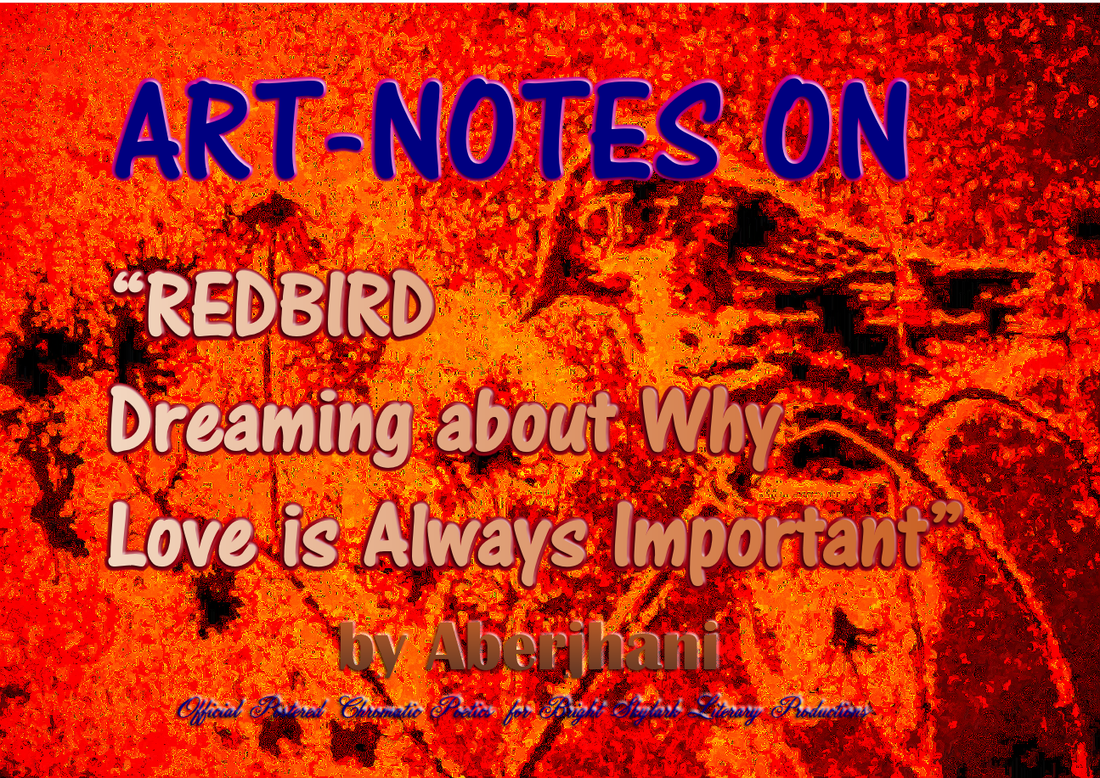
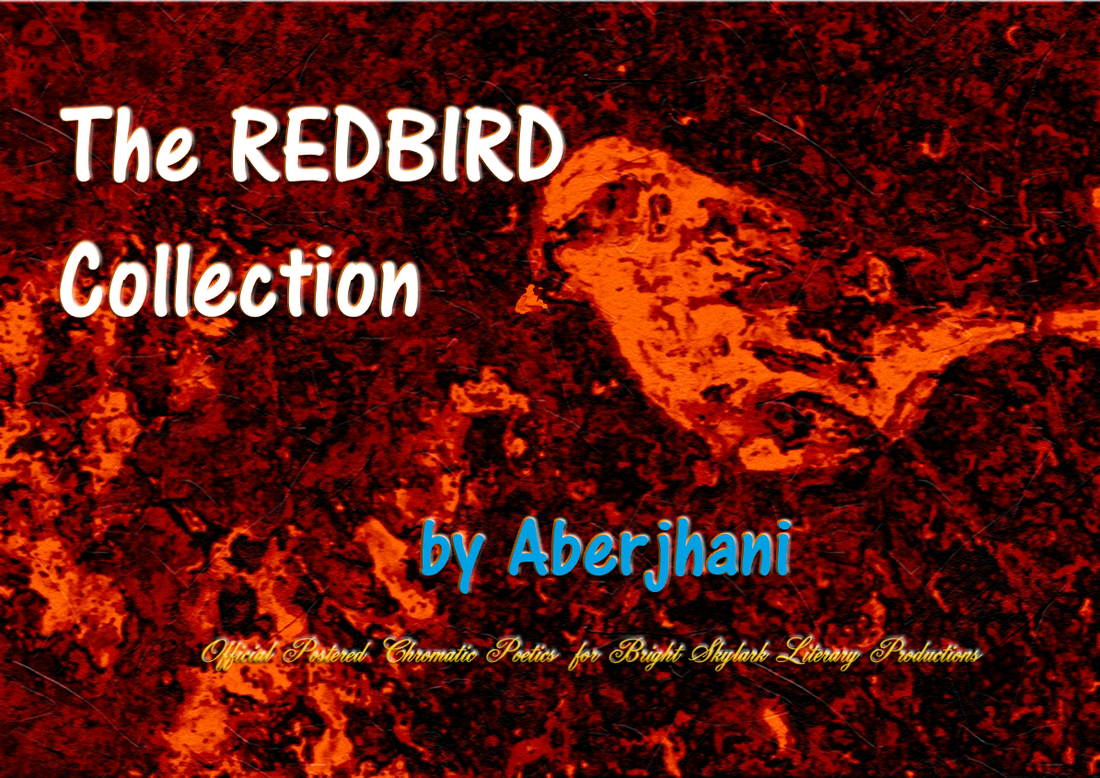
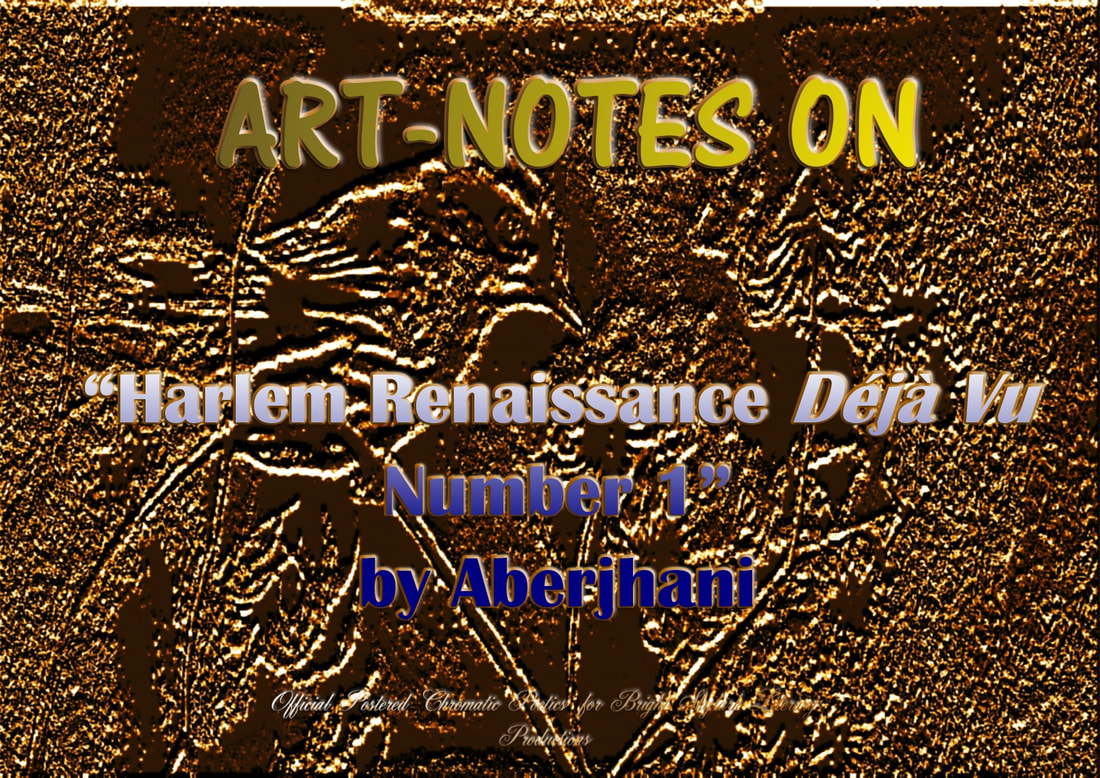
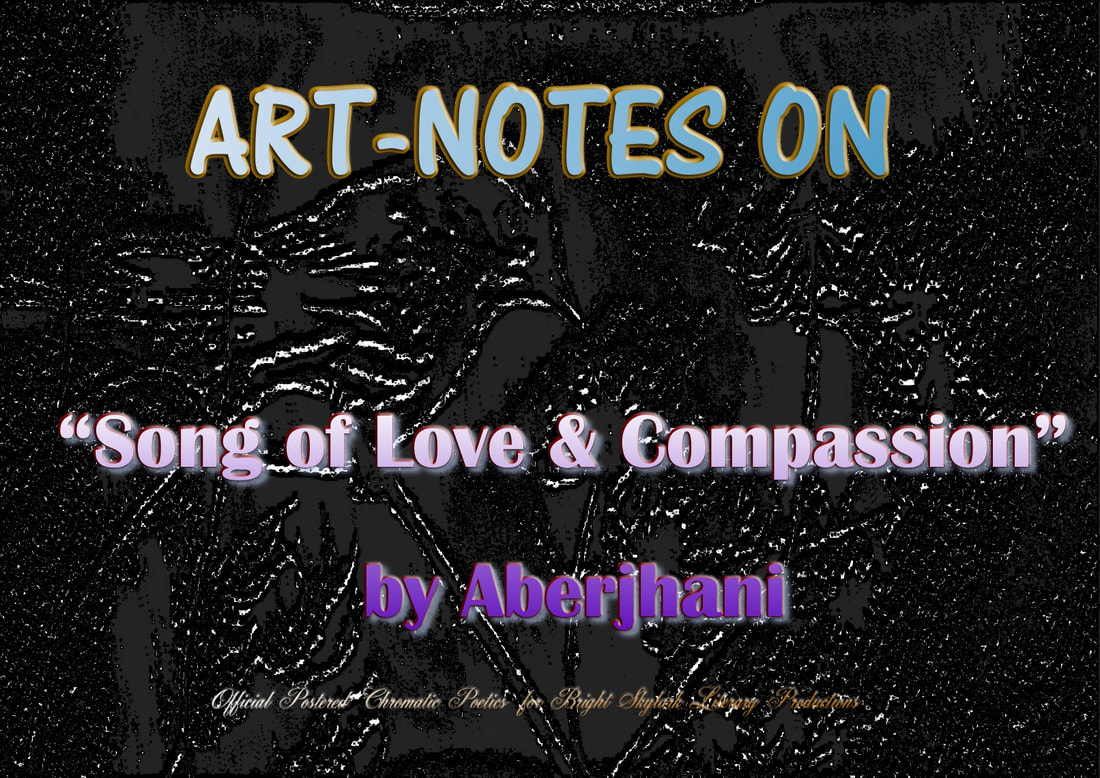
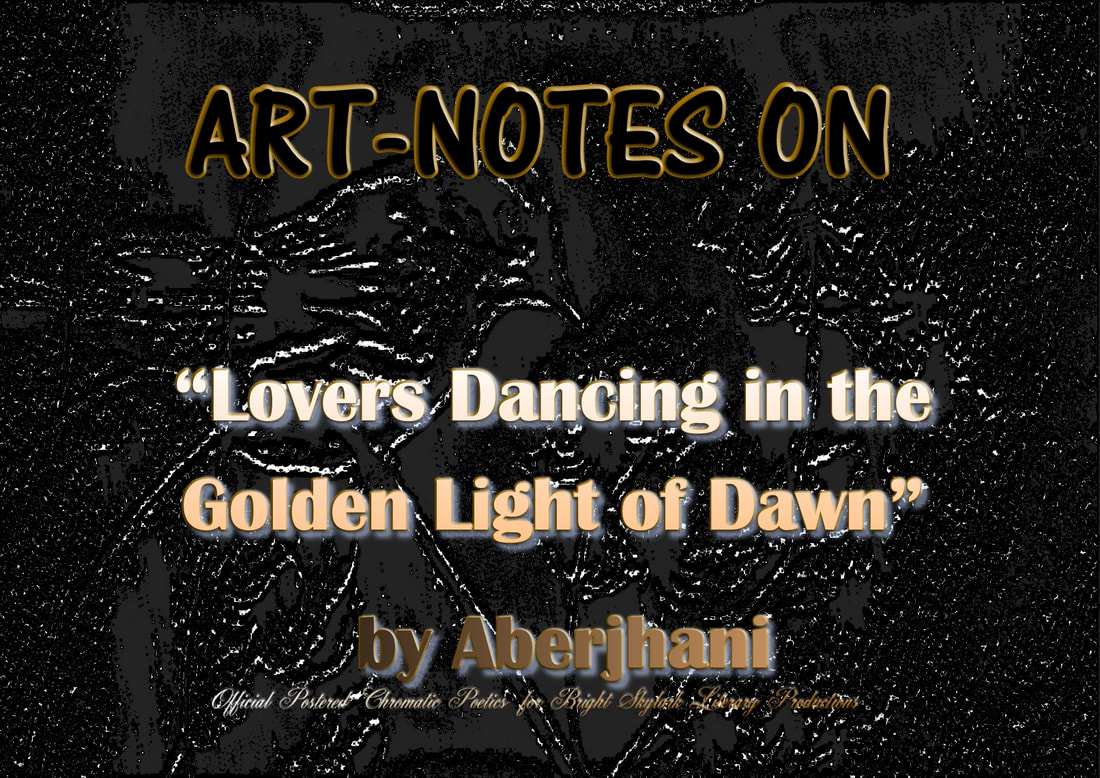
 RSS Feed
RSS Feed